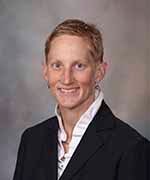Guest Column: A shared commitment to a strong Albert Lea
Published 8:19 pm Thursday, August 24, 2017
Guest Column by Annie Sadosty
In June I had the honor of being named leader for the southeast Minnesota region of Mayo Clinic Health System – with locations stretching from Owatonna to Lake City, including Albert Lea. At roughly the same time, we announced we would be making changes in Albert Lea and Austin to preserve jobs and high-quality care for patients in the face of a changing health care landscape.
We’ve heard your concerns, and share your desire to keep access to high-quality, affordable health care as close to home as possible. It’s something everybody wants and deserves. I’ve spent 18 years at Mayo as an emergency physician, grew up in a rural community and had a father who was a physician as well. I appreciate firsthand how important health care is to local identity and a vibrant economy.

Annie Sadosty
We see about 500 patients a day in Albert Lea, and while the shift of services will affect only about seven of those patients, we know any change is significant, especially when it involves where you’re born, where you rest and recover after surgery, where loved ones travel and where you work each day. We understand, and we are committed to working with community leaders to minimize the impact of this transition.
But not adjusting to the evolving health care landscape would be irresponsible, and would hurt the Albert Lea community long-term. Shifting demographics, technological advances, a decline in hospitalizations and a nationwide shortage of health professionals mean we must respond.
Twenty years ago, a routine appendectomy needed a five-inch incision, a five-day stay in the hospital and a one-month recovery. Today, that procedure is done with tiny incisions and the patient is comfortably home within a day and recovered in a week — all with fewer complications. In the future, it’s possible we may treat some appendicitis patients with no surgery at all.
We all appreciate advances in medicine that improve quality and safety and reduce recovery times, but this means many hospital beds built decades ago now sit empty, and we’re stretching staff to cover duplicate services and units that are no longer full. Moreover, advanced health care techniques require sophisticated equipment and highly skilled specialists who must collaborate rather than practice on their own. As Dr. Charles Mayo famously said in 1930, “Today, the only thing that is permanent is change.” The days of physicians like my father being able to perform every procedure themselves are less common, and we need to re-think the mix of services available in a single hospital location.
We’re already seeing evidence of these trends, and we need to respond. Hospitals in Albert Lea and Austin have experienced a 50 percent decline in overnight stays, and a similar decline in number of babies being born. Through careful study of what’s taking place in Minnesota and across the country, we don’t see this changing any time soon. More than 80 rural hospitals nationwide have closed since 2010, and a recent industry study revealed that more than 670 rural hospitals across 42 states are vulnerable to closure.
But we’re different — we can adjust while still maintaining high-quality health care. The way for us to do that is to find places where we can collaborate rather than compete or duplicate. Through our plan, the vast majority of patients will experience no change in their care. Doctor visits, emergency care, lab work, cancer care, same-day procedures and all other outpatient care will be exactly the same as today. There will be some adjustments in staffing, but the net changes also will be small. We’ve also announced significant investments in Albert Lea — in including updating and renovating the Cancer Center, replacing our campus cooling plant and building short-stay observation beds to reduce transfers.
So we can make the technology investments necessary to keep pace and allow highly specialized staff to collaborate effectively, we plan to move overnight hospitalizations and major surgeries requiring hospitalization, ICU and childbirth from Albert Lea to Austin, and move inpatient behavioral health care from Austin to Albert Lea. These changes are intended to improve the quality of health care while preserving most of the services our patients use today in both the Albert Lea and Austin locations.
These are tough issues, and we’ve acknowledged we can do better in our engagement with the community. I will be part of that. People want and deserve to be heard, and we need to listen. We’re working with Albert Lea leadership to form a community stakeholder panel, scheduling meetings with service clubs and business organizations, and continuing to work with city, county and state officials to answer their questions and find ways to reduce the impact of changes. We’ve also created a special web site at http://albertleaaustinfacts.mayoclinic.org, to share accurate information and answers to common questions.
We all have a stake in keeping the city of Albert Lea, and our medical center, strong and well-positioned for the future. Our hope is that we can listen to each other and work constructively on solutions for maintaining access to high-quality health care in the places where we choose to live and work. It will be challenging, but it’s essential to keeping our communities healthy and thriving. I’m looking forward to working with you.
Annie Sadosty is the regional vice president for Mayo Clinic Health System in the southeast Minnesota region.

